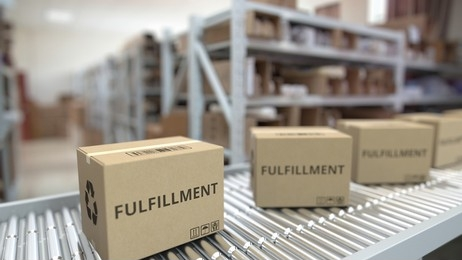Dropshipping vs. In-House Order Fulfillment: A Comprehensive Comparison
In the world of e-commerce, order fulfillment is a critical aspect of delivering products to customers efficiently. Two primary methods for order fulfillment have gained prominence: dropshipping and in-house fulfillment. Each approach has its advantages and drawbacks, and choosing the right one can significantly impact your business’s success. In this comprehensive guide, we will compare the pros and cons of dropshipping and in-house order fulfillment to help you make an informed decision for your e-commerce venture.
Understanding Dropshipping
What Is Dropshipping?
Dropshipping is a fulfillment method where online retailers partner with suppliers or wholesalers who directly ship products to customers. Retailers do not hold inventory, and products are shipped as orders are placed.
Pros of Dropshipping
1. Low Initial Investment
Dropshipping requires minimal upfront investment in inventory, making it an attractive option for those with limited capital.
2. Wide Product Selection
Retailers can offer a wide range of products without the burden of stocking inventory, allowing for flexibility in product offerings.
3. Reduced Operational Complexity
Dropshipping eliminates the need for warehousing, packing, and shipping, streamlining business operations.
Cons of Dropshipping
1. Lower Profit Margins
Due to increased competition and lower entry barriers, profit margins in dropshipping can be lower compared to in-house fulfillment.
2. Limited Control
Retailers have limited control over product quality, shipping times, and inventory levels, which can lead to customer dissatisfaction.
3. Supplier Dependence
Success in dropshipping relies on reliable suppliers. Issues with suppliers can disrupt your business.
Exploring In-House Order Fulfillment
What Is In-House Order Fulfillment?
In-house order fulfillment involves businesses managing their inventory, warehousing, and shipping processes. Products are stored on-site, and orders are processed and shipped by the company.

Pros of In-House Order Fulfillment
1. Greater Control
Businesses have full control over inventory quality, shipping times, and packaging, leading to improved customer satisfaction.
2. Better Profit Margins
In-house fulfillment allows businesses to capture a larger share of the profit margin by reducing third-party costs.
3. Brand Consistency
Businesses can maintain brand consistency in packaging and customer interactions, enhancing their brand identity.
Cons of In-House Order Fulfillment
1. High Initial Costs
Establishing an in-house fulfillment operation requires significant capital for warehousing, equipment, and staffing.
2. Inventory Management
Managing inventory can be complex and require dedicated resources for monitoring stock levels and preventing overstock or stockouts.
3. Scalability Challenges
Expanding in-house fulfillment can be challenging as it requires additional space, staff, and infrastructure.
Making the Right Choice
Factors to Consider
1. Business Scale
Small businesses with limited capital may find dropshipping an attractive option, while larger enterprises may benefit from in-house fulfillment.
2. Control and Branding
Businesses that prioritize control over their brand, product quality, and customer experience often lean towards in-house fulfillment.
3. Profit Margins
Assess the potential profit margins in your industry and how they align with your business goals.
Conclusion
Choosing between dropshipping and in-house order fulfillment is a critical decision for e-commerce businesses. Each approach comes with its own set of advantages and challenges. To make the right choice, carefully consider your business’s scale, goals, and priorities.
Whether you opt for the flexibility of dropshipping or the control of in-house fulfillment, remember that your choice can impact customer satisfaction, profitability, and the overall success of your e-commerce venture.
FAQs
1. Is dropshipping suitable for new e-commerce businesses?
Yes, dropshipping is often a suitable choice for new businesses with limited capital as it requires minimal upfront investment in inventory.
2. What are the key challenges in in-house order fulfillment?
In-house order fulfillment challenges include high initial costs, inventory management complexities, and the need for scalability as the business grows.
3. Can I switch from dropshipping to in-house fulfillment or vice versa?
Yes, businesses can transition between dropshipping and in-house fulfillment as they grow or adapt to changing circumstances. However, the transition may require careful planning and investment.
4. Which method offers better control over product quality?
In-house order fulfillment provides greater control over product quality as businesses can inspect and manage inventory directly.
5. Are there hybrid fulfillment models that combine dropshipping and in-house fulfillment?
Yes, some businesses opt for hybrid models that combine both dropshipping and in-house fulfillment to leverage the advantages of both approaches. This allows for greater flexibility and control.

